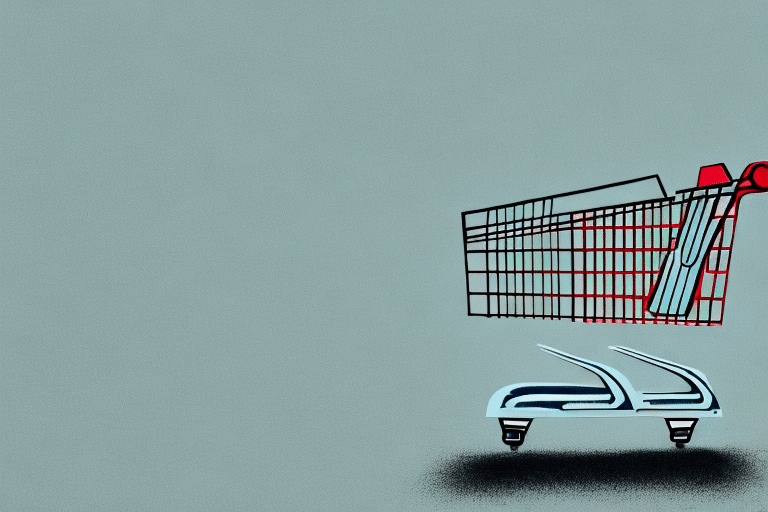What Is a Good Cart Abandonment Rate?
When it comes to running an e-commerce business, one of the most crucial metrics to track is the cart abandonment rate. This rate measures how often customers add items to their online shopping carts but do not complete the checkout process. While some cart abandonment is normal, a high rate can indicate problems with your website or checkout process, leading to lost sales and revenue.
Why Cart Abandonment is a Problem for E-Commerce Businesses
Cart abandonment is a significant challenge for e-commerce businesses. According to Shopify, the global cart abandonment rate is approximately 69.8%, meaning that nearly 7 out of 10 customers abandon their carts before completing a purchase. This high rate represents a substantial missed sales opportunity.
A high cart abandonment rate can result from various factors, including a non-user-friendly website, a complicated or lengthy checkout process, uncompetitive pricing, or unexpected shipping costs. Each of these elements can drive customers away, resulting in lost revenue.
To combat cart abandonment, businesses can offer incentives to customers who have abandoned their carts, such as discount codes or free shipping. Additionally, sending follow-up emails to remind customers of their abandoned items can be an effective strategy to encourage purchase completion.
Analyzing your website’s analytics to identify where customers are dropping off in the checkout process is crucial. This analysis can help pinpoint areas needing improvement, such as simplifying the checkout process or offering more payment options. Addressing these issues can reduce your cart abandonment rate and increase sales.
How to Calculate Your Cart Abandonment Rate
Calculating your cart abandonment rate is straightforward. Use the following formula:
Cart Abandonment Rate = [(Number of Carts Initiated - Number of Completed Transactions) / Number of Carts Initiated] x 100
For example, if 1,000 shopping carts were initiated in a month and 700 transactions were completed, the cart abandonment rate would be 30%.
Tracking your cart abandonment rate provides valuable insights into customer behavior and the efficiency of your checkout process. A high rate may indicate issues such as a complicated checkout layout, unexpected fees, or limited payment options. By identifying and addressing these issues, you can enhance the user experience and increase the likelihood of completed transactions.
Industry Average Cart Abandonment Rates and What They Mean
The average cart abandonment rate varies by industry. According to Shopify, the highest cart abandonment rates are in the travel and hospitality industry, around 81.5%, while the lowest are in the finance sector, approximately 59.8%.
While each business is unique, aiming for a cart abandonment rate below 20% is a good objective. Common reasons for high abandonment rates include unexpected shipping costs, complicated checkout processes, and concerns about payment security.
To reduce cart abandonment rates, businesses can offer free shipping, simplify the checkout process, and provide reassurance about payment security.
Sending abandoned cart emails is another effective strategy. These emails remind customers of the items left in their carts and encourage them to complete their purchase. Including a discount or special offer in these emails can serve as a powerful incentive.
Common Reasons for Cart Abandonment and How to Address Them
- Unexpected shipping costs
- Complicated or lengthy checkout process
- Concerns about payment security
- Comparison shopping
- Unsatisfactory returns policy
To address these issues, e-commerce businesses should:
- Offer clear and competitive pricing
- Provide a fast and easy checkout process
- Use secure payment methods
- Offer easy returns or refunds
- Provide excellent customer service
Lack of trust in the website or company can also lead to cart abandonment. Customers may hesitate to provide personal information or make a purchase if they are unsure about the legitimacy of the website. To build trust, ensure your website has a professional design, display customer reviews and ratings, and provide clear contact information.
Additionally, technical issues or errors during the checkout process can cause customers to abandon their carts. Regularly test and update your website’s functionality, provide clear error messages, and offer alternative payment options to mitigate these issues.
The Impact of Shipping Costs on Cart Abandonment Rates
Unexpected shipping costs are one of the main reasons customers abandon their shopping carts. According to Shopify, 60% of customers abandon their carts due to high shipping costs.
To address this, consider offering free shipping or setting a minimum order value for free shipping. Alternatively, you can offer flat-rate shipping or incorporate shipping costs into product pricing.
Providing clear and transparent information about shipping costs upfront can also help reduce abandonment. Display shipping costs on product pages or in the shopping cart before customers proceed to checkout. Additionally, offering multiple shipping options, such as standard or expedited shipping, gives customers more control over their shipping costs and can increase purchase completion rates.
Using Personalization to Reduce Cart Abandonment Rates
Personalization plays a key role in reducing cart abandonment rates. By understanding customers' preferences and behaviors, you can create a personalized shopping experience that encourages them to complete their purchases.
Implement targeted marketing campaigns, personalized recommendations, and personalized promotions or discounts to incentivize customers to complete their purchases.
Offering personalized customer support is another effective strategy. Providing live chat support, personalized email follow-ups, or even personalized phone support can address any concerns or questions customers may have, guiding them through the purchasing process.
Utilizing Remarketing Campaigns to Recover Abandoned Carts
Remarketing campaigns are powerful tools for recovering abandoned carts. By targeting customers who have abandoned their carts with personalized ads or emails, you can incentivize them to return and complete their purchase.
Ensure your remarketing campaigns are optimized for conversion with clear and compelling calls-to-action, personalized messages, and attractive promotions or discounts.
Timing is crucial for the success of remarketing campaigns. Sending personalized ads or emails too soon after cart abandonment may seem pushy, while waiting too long may cause customers to lose interest. Testing and analyzing the optimal timing for your specific audience and product offerings can enhance the effectiveness of your campaigns.
The Role of User Experience in Reducing Cart Abandonment Rates
User experience (UX) is essential in reducing cart abandonment rates. Your website should be easy to navigate, with clear product descriptions, high-quality images, and a streamlined checkout process.
Ensure your website is optimized for mobile devices, as the majority of online shopping occurs on mobile. Offer multiple payment options, including credit cards, PayPal, and digital wallets like Apple Pay, to make it easy for customers to complete their purchases.
Best Practices for Streamlining the Checkout Process and Reducing Cart Abandonment
To reduce cart abandonment rates, it’s important to offer a fast, easy, and streamlined checkout process. Follow these best practices:
- Minimize the number of steps in the checkout process
- Include a progress bar to show customers their progress through the checkout
- Provide a clear summary of the cart and order details on the checkout page
- Allow customers to checkout as guests or create an account if they choose
- Offer multiple payment options
The Importance of Email Marketing in Reducing Cart Abandonment
Email marketing is an effective tool for reducing cart abandonment rates. By sending personalized follow-up emails after a customer abandons their cart, you can incentivize them to return and complete their purchase.
Ensure your follow-up emails are personalized, include a clear and compelling call-to-action, and offer an attractive promotion or discount to encourage customers to complete their purchase.
Using Analytics to Monitor and Improve Your Cart Abandonment Rate
Analytics are essential for improving your cart abandonment rate. By monitoring metrics such as conversion rate, bounce rate, and cart abandonment rate, you can identify areas for improvement and make data-driven decisions to optimize your website and checkout process.
Utilize tools like Google Analytics or Kissmetrics to track your cart abandonment rate and monitor customer behavior on your website. Conduct A/B testing to evaluate different variations of your checkout process and measure their impact on your cart abandonment rate.
How to Set Realistic Goals for Your Business's Cart Abandonment Rate
Setting realistic goals for your cart abandonment rate is crucial for improving your e-commerce business. Consider factors such as your industry, competition, and target audience when establishing these goals.
Ensure your goals are specific, measurable, achievable, relevant, and time-bound (SMART). This approach will help you track your progress and make data-driven decisions to optimize your website and checkout process.
Top Tools and Software to Help Reduce Your Cart Abandonment Rate
Numerous tools and software are available to help reduce your cart abandonment rate. Some top tools include:
- Abandoned cart recovery plugins, such as CartHook or Jilt
- Email marketing software, such as MailChimp or ActiveCampaign
- User experience optimization tools, such as Hotjar or CrazyEgg
Integrating these tools into your e-commerce website can streamline your checkout process and help reduce your cart abandonment rate.
Case Studies: Successful Strategies for Reducing Cart Abandonment Rates
Several case studies demonstrate successful strategies for reducing cart abandonment rates. Some effective strategies include:
- Offering free shipping or flat-rate shipping
- Using personalized follow-up emails
- Optimizing the checkout process for mobile devices
- Utilizing user experience optimization tools
By studying these case studies and implementing successful strategies in your own e-commerce business, you can reduce your cart abandonment rate and increase your sales and revenue.
Conclusion
In conclusion, a good cart abandonment rate varies by industry and individual business, but aiming for a rate below 20% is a solid goal. By understanding the common reasons for cart abandonment and implementing best practices and tools, you can optimize your website and checkout process, reduce your cart abandonment rate, and boost your sales and revenue.






















